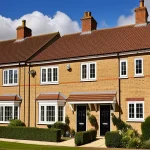The Connection Between Home Design and Lifestyle Quality
The impact of home design on lifestyle quality is profound, influencing both our well-being and daily routines. Physical space shapes how efficiently we move through our homes, how relaxed we feel, and even our emotional states. Thoughtful home design can foster personal happiness by creating environments that support comfort, functionality, and aesthetic pleasure.
For example, well-planned layouts reduce clutter and minimize stress, while selecting calming color schemes and natural materials enhances a sense of peace. The benefits of home design extend beyond looks; when spaces are customized to individual needs, they encourage positive habits, such as regular exercise or social interaction, improving overall quality of life.
This might interest you : What are the top tips for organizing a UK kitchen efficiently?
Creating an optimal environment involves balancing functionality and comfort. This can mean organizing rooms to suit specific activities, like reading or cooking, while ensuring the flow between areas is smooth. Investing time and effort in these considerations not only increases daily enjoyment but supports mental and physical health, illustrating why home design impact is a critical factor in lifestyle quality.
Principles of Health-Supportive Home Design
Integrating health and home design principles creates spaces that actively promote well-being. Key components include ample natural light, effective ventilation, and incorporating greenery—elements central to biophilic design. Natural light regulates circadian rhythms, enhancing sleep quality and mood, while fresh air circulation helps reduce indoor pollutants, directly benefiting respiratory health.
Have you seen this : How Can You Transform Your Living Space to Reflect Modern British Style?
Ergonomic furniture plays a vital role in physical comfort. Chairs and desks designed to support posture prevent strain and musculoskeletal issues, which are common in poorly planned spaces. The choice of materials matters, too; non-toxic, hypoallergenic finishes reduce exposure to harmful chemicals, reinforcing wellness interiors.
Consider a home where large windows invite sunlight and potted plants bring nature indoors—this setup exemplifies the benefits of home design focused on health. Case studies show that such environments reduce stress and boost immune function, directly impacting lifestyle quality.
Applying these elements may involve:
- Selecting adjustable ergonomic seating
- Installing operable windows or air purifiers for ventilation
- Using natural, breathable fabrics and finishes
By centring health in design decisions, homes become more than shelters; they transform into sanctuaries that foster both physical and mental vitality.
Design Elements that Enhance Productivity and Relaxation
Designing a home with functional design at its core can significantly improve both home office productivity and opportunities for relaxation. Efficient workflow stems from layouts that reduce distractions and promote focus. For instance, positioning a desk near natural light enhances alertness and creativity, while clear separation of work zones prevents overlap with leisure areas.
Creating dedicated relaxation spaces is equally vital. These zones might include cozy reading nooks or quiet corners with soft lighting and comfortable seating to help lower stress. Thoughtful additions like soundproofing or aromatic elements can further deepen relaxation, supporting mental rejuvenation after work hours.
Balancing spaces for work and leisure requires intentional planning. Multi-functional rooms with movable furniture or partitions offer flexibility, letting residents switch between productivity and rest easily. This adaptability increases overall lifestyle quality by accommodating varying daily demands without sacrificing comfort.
In summary, integrating design elements that prioritize both efficient work environments and soothing retreats cultivates a balanced home atmosphere. This dual focus fosters sustained productivity while ensuring ample space for relaxation, directly enhancing well-being. Such approaches highlight the broad benefits of home design tailored to contemporary living needs.
The Importance of Personalisation in Home Design
Personalised home design plays a crucial role in enhancing lifestyle quality by reflecting individual tastes and needs. When a space incorporates unique décor ideas tailored to its occupants, it fosters a deep sense of emotional comfort. This connection creates an environment where people feel truly at ease and motivated to engage in daily activities.
Emphasizing personalisation means going beyond generic trends and prioritizing elements that resonate emotionally. For instance, integrating cherished artwork or heirlooms can transform a room into a meaningful sanctuary. The benefits of home design become more apparent as these touches boost satisfaction and reinforce a sense of belonging.
Furthermore, personalised home design can adapt to changing lifestyles. Modifying lighting, furniture arrangement, or color schemes to suit evolving preferences supports ongoing well-being and functionality. This dynamic approach ensures that homes remain supportive environments rather than static spaces.
In practice, achieving emotional comfort through customisation includes:
- Selecting décor that reflects hobbies or passions
- Choosing colors and textures that evoke positive memories
- Incorporating flexible furnishings that adapt to personal routines
Such thoughtful design decisions create living spaces that not only embody style but also nurture mental and emotional health, highlighting the profound impact of personalisation on overall lifestyle quality.
Practical Tips for Lifestyle-Boosting Home Design
Boosting lifestyle quality through home design tips starts with simple, impactful changes that enhance both comfort and functionality. Adjusting lighting is a key strategy—installing layered options like dimmable bulbs or task lighting allows tailored ambiance for activities, supporting mood and productivity. Choosing calming or vibrant color schemes influences emotional well-being; soft neutrals promote relaxation, while energizing hues can invigorate daily routines.
Smart storage solutions declutter spaces, reducing stress by keeping belongings organised and accessible. Utilizing multi-purpose furniture, such as ottomans with hidden compartments or wall-mounted shelves, maximizes usable area without overcrowding rooms. These functional décor solutions contribute to a cleaner, more welcoming environment that adapts to changing needs.
Cost-effective updates might include swapping upholstery for breathable fabrics or adding indoor plants to bring natural textures indoors—both enhancing aesthetics and health. Regularly revisiting design choices encourages continuous lifestyle improvement, ensuring environments evolve with personal habits and preferences.
Incorporating these practical tips supports a harmonious home where style meets utility, illustrating the enduring benefits of home design. By focusing on manageable, budget-friendly enhancements, anyone can cultivate spaces that nurture well-being while reflecting individual tastes.






